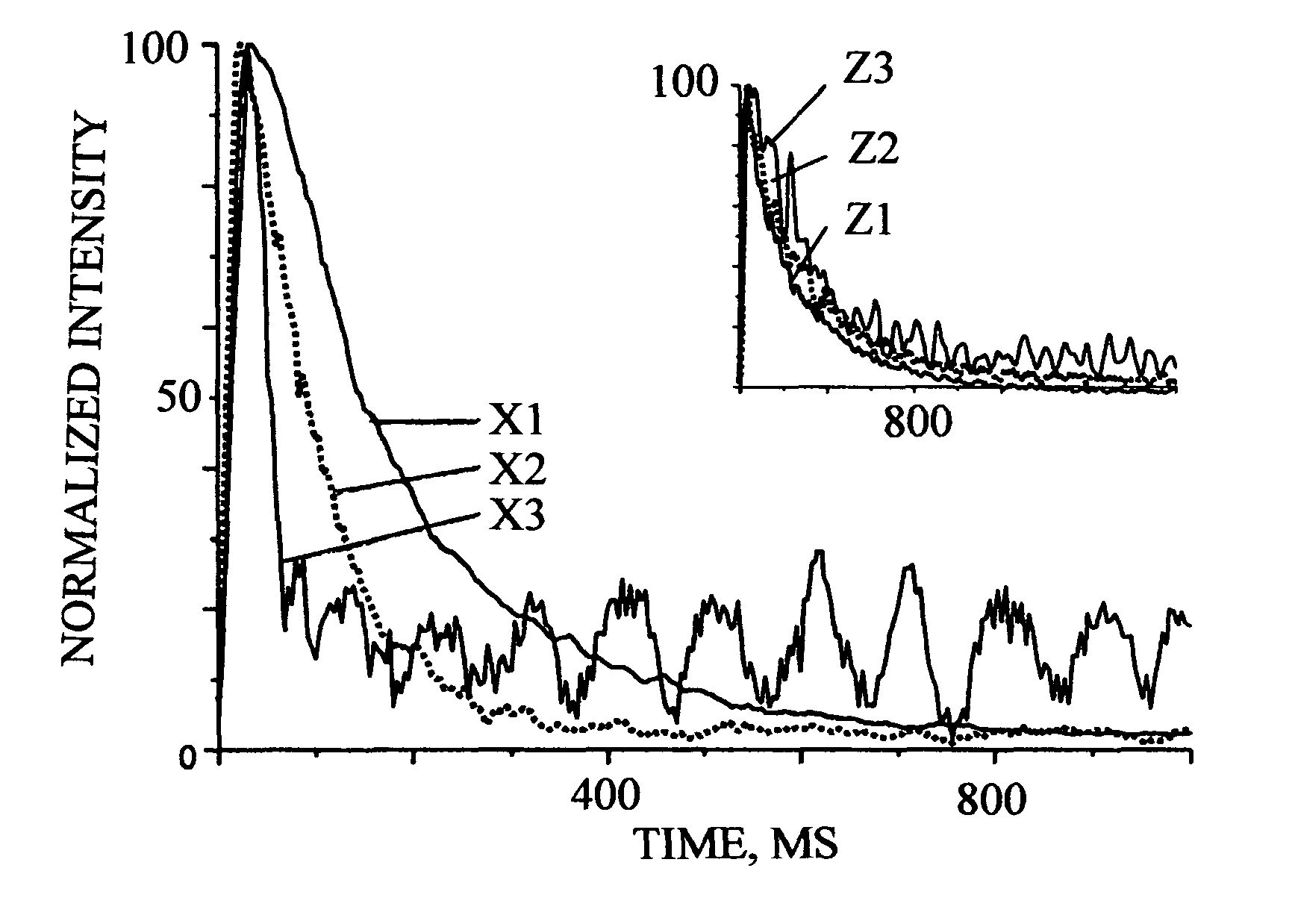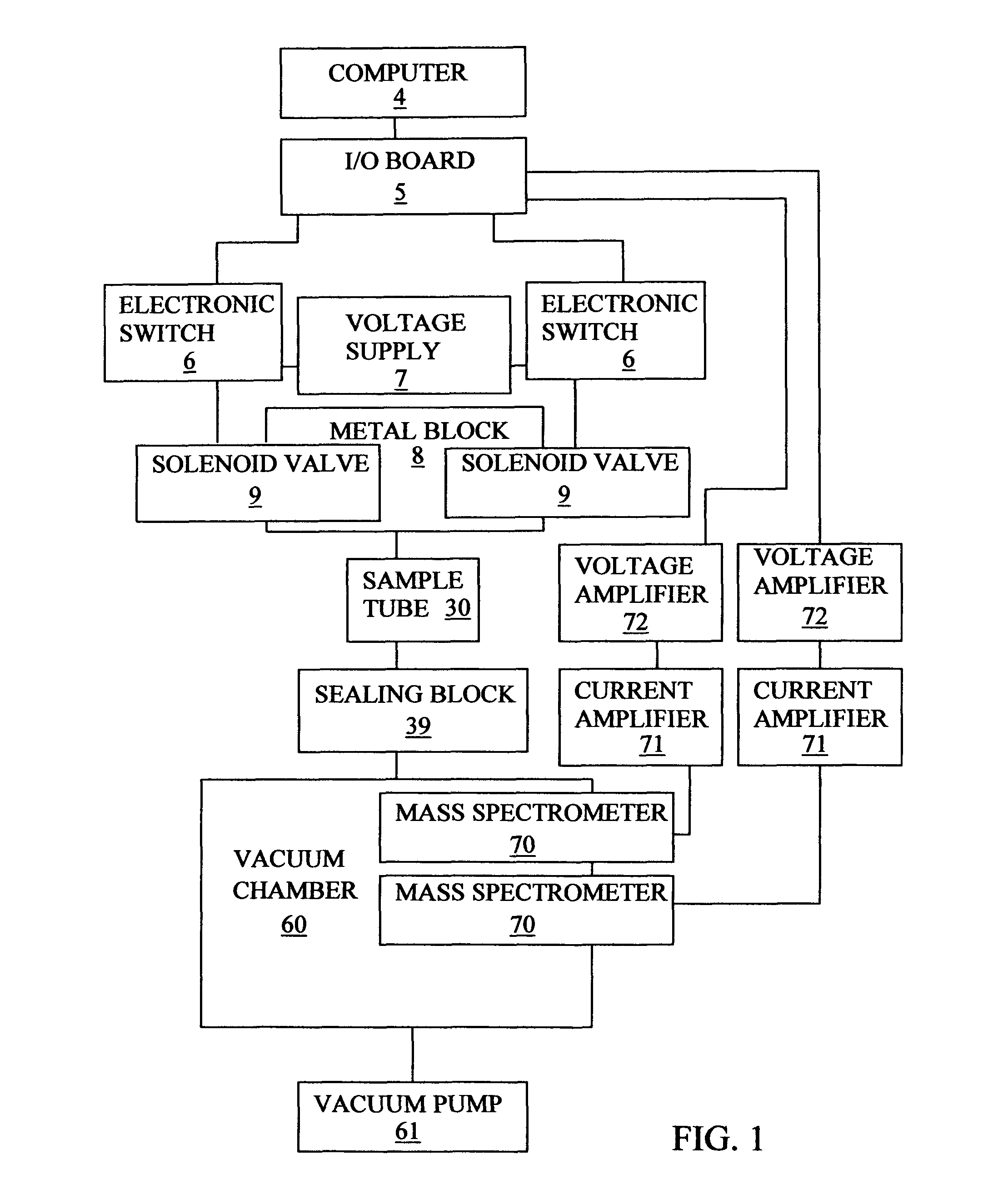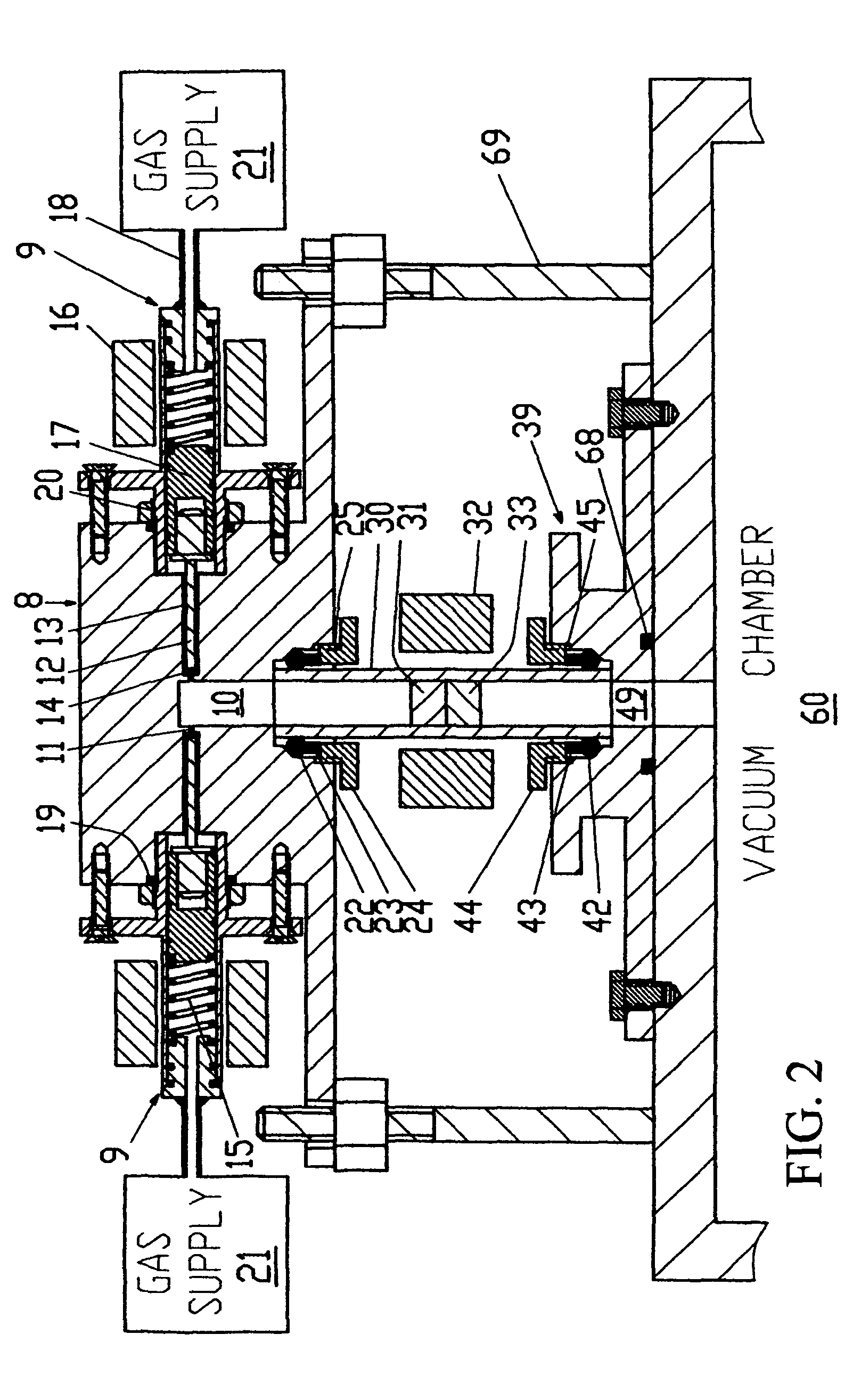Apparatus and method to measure the kinetics parameters of a porous powder catalyst
a technology of porous powder and kinetic parameters, which is applied in the field of characterization of powder catalysts, can solve the problems of inaccurate normalization of the entire surface, measurement is carried out, and no means that can selectively measure just the active fraction, etc., and achieves the effect of reducing surface collisions and faster gas transmission
- Summary
- Abstract
- Description
- Claims
- Application Information
AI Technical Summary
Benefits of technology
Problems solved by technology
Method used
Image
Examples
embodiment 2
Detailed Description of Embodiment 2
[0155]FIG. 3 shows a sectional view of the mechanical components that form the gas flow path of an embodiment 2 apparatus. The embodiment 2 apparatus is designed particularly for use with a catalyst powder that needs cleaning by a continuous flow of cleaning gas at atmospheric pressure. The embodiment 2 apparatus is basically similar to the embodiment 1 apparatus and only its differences are described. The embodiment 2 apparatus is different in that different gas removing means, namely, vacuum chamber 60 and vacuum pump 61 or exhaust 62 or roughing pump 63, can be selected using a sealing block-A 40 that is different from sealing block 39. Sealing block-A 40 is different in being able to provide for the outlet from the sample tube to be selected to communicate with either vacuum chamber 60 or through a 3-way ball valve 41 to an exhaust 62 or a roughing pump 63.
[0156]Sealing block-A 40 is used to deliver the gas from the sample tube to one of the g...
embodiment 3
Detailed Description of Embodiment 3
[0168]A novel aspect of this invention, in the performance of an active site concentration measurement, is that a gas pulse in Knudsen flow is used to provide a surface concentration that is both a measurable fraction of, roughly >1%, and substantially less than, roughly 15 molecules per pulse. Then, to keep the surface concentration substantially less than the active site concentration, the amount of catalyst in the sample should contain about less than 1×1016 active sites. This amount of active sites is quite small, e.g., for a 1 wt % Pt catalyst with 80% metal dispersion, this is the amount of active sites present in about 5 mg catalyst powder. Then, to satisfy that the bed diffusion time constant (for flow in the packed bed) be larger than the intraparticle diffusion time constant in the catalyst powder (for flow inside the powder), the two embodiments above have to use a packed bed of a mixture of catalyst and inert powders. However, in some ...
PUM
| Property | Measurement | Unit |
|---|---|---|
| volume | aaaaa | aaaaa |
| particle size | aaaaa | aaaaa |
| particle size | aaaaa | aaaaa |
Abstract
Description
Claims
Application Information
 Login to View More
Login to View More - R&D Engineer
- R&D Manager
- IP Professional
- Industry Leading Data Capabilities
- Powerful AI technology
- Patent DNA Extraction
Browse by: Latest US Patents, China's latest patents, Technical Efficacy Thesaurus, Application Domain, Technology Topic, Popular Technical Reports.
© 2024 PatSnap. All rights reserved.Legal|Privacy policy|Modern Slavery Act Transparency Statement|Sitemap|About US| Contact US: help@patsnap.com










